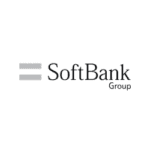 The first thing you need to know about reading a hotel financial statement is there are basically two different statements that you will want to get comfortable with. The two different statements are the income statement, some call it the P&L for profit and loss statement and the second in the balance sheet.
The first thing you need to know about reading a hotel financial statement is there are basically two different statements that you will want to get comfortable with. The two different statements are the income statement, some call it the P&L for profit and loss statement and the second in the balance sheet.
Now I know what you’re thinking, balance sheets are for the accounting types and they are complicated. Nothing could be further from the truth and I am going to give you a new understanding and share a secret about the balance sheet and the relationship to the P&L.
The income statement
Let’s start with the income statement. A couple of things to note here. One the hotel income statement is a free-form item and they are not all created equal. One characteristic that they all have is they are set up by department. Always starting with the rooms department, then F&B, then the minor operating departments like golf, spa, telephone, and laundry. These departments are what we call the operating departments because they all have income.
Then we find the non-operating departments, Administration, sales and maintenance, these departments all called non-operating because they don’t generate any income. I know some of you think the sales department makes money, not so fast. Sales book business but it’s the rooms department that generates the income when the guest actually stays in our hotel. Funny, the P&L is organized and laid out just like a hotel.
Inside each department we will see the same layout, income first and then cost of sales if required, then payroll and last is expenses. The P&L usually starts with a great summary or overall report. This is where you will want to start your review. Here you should find total revenues for all hotel activities and the total costs, leading us to the gross operating profit and net operating profit lines.
The statement is usually laid out so we can see the results of the month compared to the budget and or forecast for that same month and a last year comparison. In addition to the months numbers, we will want to see the accumulated year to date results, normally to the right of the monthly numbers. And in the YTD, we want to see the accumulated result, let’s say for November vs. the accumulated budget values up until November, and the accumulated YTD last year results for the prior year up until November. Always comparing like periods of time in the budget and last year to the actual monthly and YTD amounts. A good summary P&L is probably the most read and highly anticipated financial statement in any hotel.
One thing to always keep in mind is the fact that many miss. It’s the existence of the 11th addition of the uniformed system of accounts for the lodging industry. Here is a link.
It lays out in nauseating detail the standards for our industry. It is a great resource for defining what goes where and the standard formats, but it does not include several aspects like flow thru and productivity reporting which are incredibly powerful and useful tools. If you’re serious about hotel financial knowledge then I highly recommend you get yourself a copy. It is a great resource.
Leaving the summary statement, we find the balance of the income statement laid out by department in the same order we see in the top level. Each of these departmental statements will have totals for revenue, cost of sales (F&B, Spa, Telephones), payroll and expense that need to tie back to the summary statement. Once people make this connection it all comes together rather quickly and what we previously thought was so complicated and confusing is pretty straightforward.
The profit and loss statement is the most interesting statement because it shows us how we are doing as it relates to profit for a given period. It’s a snapshot of what the revenues and costs are for the period we are looking at. If we’re looking at the June statement and it is now December, it really is not relevant anymore.
The income statement tells us how we are doing financially with our operating profit. It’s how we keep score relative to the budget (the promise) and last year. We can clearly see these comparisons for the most current month and year to date. We can also see where we have succeeded in our operations and where we have our challenges. This is pivotal.
Seeing where we are not having the level of success we panned for and having the ability to manage around that challenge is the highest sole purpose of the income statement. How can we improve our results? Payroll is too high? Expenses are out of control? Revenues are falling short of budget? It all comes out on the income statement. Like a report card and a wakeup call to pull up your socks and your marks too. This is where the income statement transcends the black and white piece of paper and it becomes the vehicle for change and ideas. Get your team involved and change the way you manage. That’s the result that’s possible using some financial leadership.
The balance sheet
The second most common statement you will want to be comfortable reviewing every month is the balance sheet. The balance sheet tests the fundamental accounting equation. The equation states that assets equal liabilities plus equity. Most people get quiet here when we start talking the mumbo jumbo but this concept is super easy and once you grasp it you’re going to see the world of finance in a completely different light.
When I teach my students this concept in my workshops they often comment that they had no idea that the fundamental accounting equation was so simple. Here goes. I liken the explanation of the fundamental accounting equation to the ownership value relationship of a house. We along with the bank own the house. In this example, the house has a market value of $500,000 and we have a mortgage of $350,000 with the bank on the house. We subtract the two numbers and that’s our share or as we describe it in accounting terms, my equity or sometimes we say owners’ equity. $500,000 – $350,000 = $150,000. Understanding this basic concept is exactly the same as the balance sheet mechanics and it’s the “fundamental accounting equation”.
You can be the most complicated business in the world and it all boils down to the same concept. Assets-Liabilities=Equity. In the example of the house, we get the fact that the $150,000 is ours, that would be our right to the upside of the sale price less the mortgage. In business, the assets minus the liabilities is what the owner is entitled to, their equity. It’s also important to remember that the equity can be a negative. In the example of the house and the recent financial crisis, we know houses can have bigger mortgages than value if the market goes down. In a business, we want to have a healthy asset to liability ratio but this is not always the case. So, knowing this simple equation we can now test the health of the business by examining the values of the total assets and liabilities.
The quality of those assets in a hotel should be relatively easy to measure. Cash, receivables, inventory, prepaid expenses. We use these items to make money, hence they are assets. The liabilities are all the commitments we have that we must honor. Vendors to pay, deposits for future guests, taxes collected that need to be paid, employees’ wages and vacations to honor. In simplistic terms, we have the good stuff, the assets, less the bad stuff, the bills we need to pay, and the difference is the equity. Same concept as the house above.
The link between the income statement and the balance sheet is an important and powerful concept. When we make a profit or have a loss in our business we can see the bottom line number on the year to date column on the income statement. The link. What we also can see is that it’s the same number we find on the balance sheet when we look at the current years retained income line in the equity section. The other line called retained income from prior periods is the accumulated profits and losses since that business was created. This is the link between the current year’s profit performance and the lifetime of the business’s accumulated results.
The business gets created when it is bought/sold. A new set of books is created and we start everything from the purchase price values. Everything from that point forward moves from the income statement each month to the balance sheet and its accumulated profit or loss is found in the equity. Assets – liabilities = owners’ equity. See not so difficult.
















